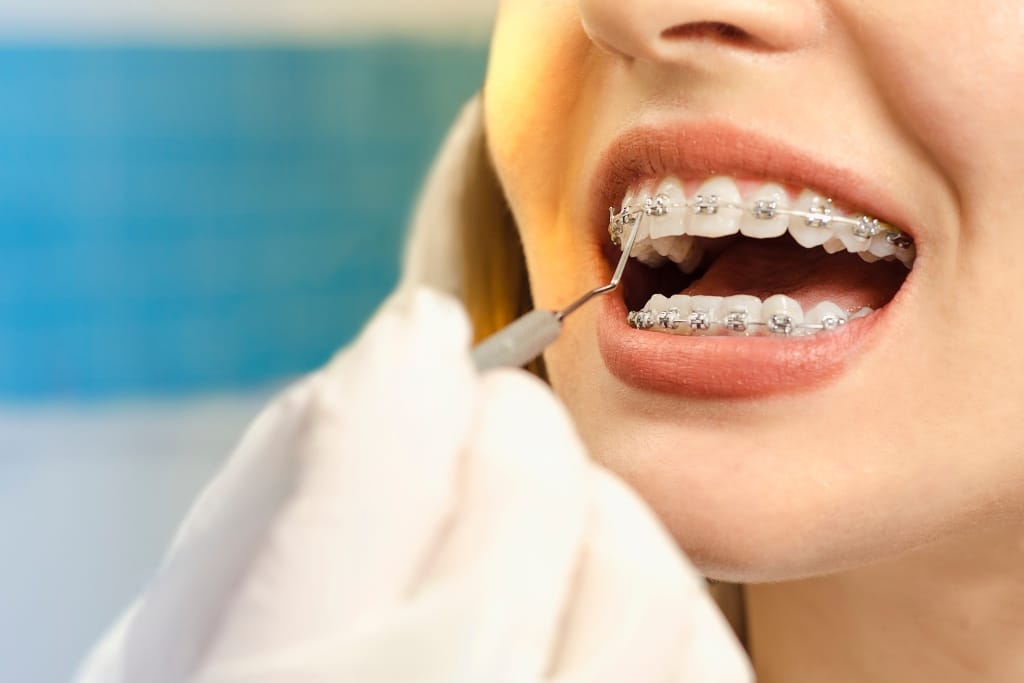Financing teeth braces can be a challenging task. Braces are expensive, and many dental insurance policies do not cover the cost of orthodontic treatments.
However, having straight teeth can positively impact your oral health and your overall confidence.
If you or your child needs braces, there are various financing options available to make the process more manageable.
Here are ten tips for financing teeth braces.
1)) Orthodontic Consultation
Before financing your teeth braces, schedule an orthodontic consultation. An orthodontist can examine your teeth and determine the best course of treatment.
They may recommend Invisalign, traditional metal braces, ceramic braces, or lingual braces.
The cost of your braces will depend on the type and duration of treatment needed.
Tips for Navigating Your Orthodontic Consultation:
- Do Your Homework: Before attending the consultation, do some research about different types of braces and orthodontic treatments. This will help you ask informed questions and better understand the orthodontist's recommendations.
- Prepare a List of Questions: Write down any questions or concerns you have about the process. This could include questions about the duration of treatment, pain management, maintenance of braces, and impact on lifestyle.
- Discuss Financing Options: During the consultation, openly discuss your budget and ask about financing options. Most orthodontic offices have payment plans or partnerships with healthcare credit companies. This can make the cost of braces more manageable.
An orthodontic consultation isn't just about examining your teeth, but also an opportunity to understand the process better and plan your finances.
Armed with the right information and a well-thought-out list of questions, you can make informed decisions about your orthodontic treatment.
Always remember, open communication about your financial constraints can lead to viable solutions that make teeth braces a manageable investment for your oral health.
2)) Dental Insurance
Some dental insurance policies include coverage for orthodontic treatment. Contact your insurance provider and inquire about your coverage options.
If braces are not covered by your plan, ask how much orthodontic coverage you have, or if they have an orthodontic discount plan.
Navigating Dental Insurance for Orthodontic Treatment:
- Understand Your Policy: Thoroughly read your dental insurance policy to understand what is covered. Policies often have specific terms and conditions about orthodontic treatments.
- Direct Communication: Contact your insurance provider directly and ask specific questions about orthodontic coverage. If braces aren't covered, inquire about orthodontic discount plans or other alternatives.
- Explore Additional Coverage: If your current policy doesn't cover orthodontic treatment, consider purchasing additional coverage or switching to a provider that does. Comparing different insurance plans can help you find the best deal.
Utilizing dental insurance for orthodontic treatment requires a clear understanding of your policy and open communication with your provider.
Exploring all available options and considering additional coverage, if necessary, can significantly reduce the financial strain of braces.
Making informed decisions about your dental insurance can make your orthodontic journey more financially manageable.
3)) Payment Plan
Many orthodontists offer payment plans to make braces more affordable. You can typically begin treatment with a down payment and make monthly installments until your balance is paid in full.
Some orthodontic offices offer interest-free payment plans, while others charge interest.
Be sure to inquire about the details of the payment plan before committing.
Making the Most of Orthodontic Payment Plans:
- Ask About Interest: Before committing to a payment plan, ask if it includes interest. Some orthodontists offer interest-free payment plans, which can help save a considerable amount of money.
- Evaluate Your Budget: Consider your monthly budget before agreeing to a payment plan. Ensure the monthly installment fits comfortably into your budget to avoid any financial strain.
- Understand the Terms: Make sure you understand all the payment plan terms, including what happens if you miss a payment or are late. Always get the agreement in writing for future reference.
Orthodontic payment plans can be a feasible route to finance braces if approached wisely.
It's crucial to understand all the terms, including interest rates, and to ensure the monthly payments align comfortably with your budget.
Every detail matters, so be proactive in asking questions and keeping a written record of your agreement.
This way, the path to a healthier smile won't be strewn with financial stress.
4)) Health Savings Account (HSA)/Flexible Spending Account (FSA)
If your employer offers an HSA or FSA, you can save pre-tax dollars toward qualified medical expenses.
Braces are an allowed expense under these plans. Consult your employer or benefits administrator to determine if you have an HSA or FSA and how much you can contribute.
Maximizing Your HSA/FSA for Orthodontic Treatment:
- Check Eligibility: Ensure that orthodontic treatment is a qualified expense under your HSA/FSA plan. While braces are typically covered, it's important to verify with your benefits administrator.
- Understand Contribution Limits: Familiarize yourself with the annual contribution limits of your HSA or FSA. Planning contributions can help you maximize pre-tax savings.
- Schedule Wisely: HSA funds roll over from year to year, but FSA funds do not. If you're using an FSA, try to schedule payments in a way that utilizes the funds before they expire.
Leveraging an HSA or FSA for orthodontic treatment can lead to significant savings, given these accounts use pre-tax dollars.
It's important to verify the eligibility of orthodontic treatment under your plan, be aware of the contribution limits, and schedule payments strategically to avoid losing FSA funds.
With careful planning, an HSA or FSA can make a noticeable difference in managing the cost of braces.
5)) Personal Savings
If you have a savings account or emergency fund, use it to finance your braces.
This approach will save you interest and potentially lower your monthly payments on a payment plan.
Smartly Utilizing Personal Savings for Orthodontic Treatment:
- Plan Ahead: If possible, plan your orthodontic treatment ahead of time. This will give you the chance to save up and reduce the burden on your savings when the time comes.
- Budget Wisely: Dedicate a portion of your savings specifically for orthodontic treatment. This helps ensure that other financial goals or emergencies are not affected.
- Avoid Impulsive Spending: Resist the urge to spend savings impulsively. Using your savings for orthodontic treatment saves you from paying interest on loans or payment plans.
Using personal savings for orthodontic treatment can be an efficient way to avoid extra costs like interest.
It necessitates careful planning, budgeting, and disciplined spending.
By setting aside funds specifically for orthodontic treatment and resisting impulsive expenditures, your savings can secure not only your financial health but also a healthier smile without adding financial stress.
6)) Credit Card
If you have a credit card with a 0% introductory APR offer or a low interest rate, you may be able to finance your braces with it.
However, be cautious when using credit to pay for medical expenses as high interest rates can increase your debt.
Maximizing the Use of Credit Cards for Orthodontic Treatment:
- Consider Introductory APR: If your credit card offers a 0% introductory APR, it can be an affordable way to finance your braces. Just ensure you can pay off the balance before the introductory period ends and the regular interest rate applies.
- Avoid High-Interest Cards: If a credit card carries a high interest rate, it might not be the best choice for financing your braces. The interest charges could end up making your treatment considerably more expensive.
- Pay On Time: Ensure to make your credit card payments on time to avoid late fees and damage to your credit score. This good habit also keeps your debt under control.
While a credit card can be a viable option to finance orthodontic treatment, it requires careful management.
Opting for a low-interest rate card or one offering a 0% introductory APR can be cost-effective, provided you're able to pay off the balance in time.
Avoid cards with high interest rates to prevent escalating costs.
Ensuring timely payments will not only save you from late fees but will also preserve your credit score, creating a balanced approach to financing braces.
7)) Consider A Personal Loan
If you have good credit, you may be able to secure a personal loan with a lower interest rate than a credit card.
This can be a good option for those who want to avoid the high-interest rates associated with credit cards.
Leveraging Personal Loans for Orthodontic Treatment:
- Check Your Credit Score: Before applying for a personal loan, it's important to know your credit score. A stronger score can result in better loan terms and lower interest rates.
- Shop Around: Don't settle for the first loan offer you come across. Take your time to shop around and compare interest rates, terms, and fees to ensure you're getting the best deal.
- Plan Your Repayments: Make sure you have a repayment plan in place before taking out a personal loan. Understand the terms of the loan and ensure you can meet the monthly payment requirements to avoid defaulting.
A personal loan can be a practical option for financing orthodontic treatment if managed wisely.
The key lies in understanding your credit score, exploring various loan offers, and setting up a robust repayment plan.
With these steps, you can secure a personal loan with favorable terms that won't strain your budget or lead to financial instability, making your journey to a healthier smile more affordable and less stressful.
8)) Grants And Charities
Several organizations provide financial assistance for orthodontic treatment.
Smiles Change Lives, the Orthodontic Assisting National Board Foundation, and the American Association of Orthodontists all offer programs to provide braces for low-income families.
Making the Most of Grants and Charities for Orthodontic Treatment:
- Research Widely: Numerous organizations offer financial aid for orthodontic procedures. Spend time researching to identify those whose requirements you meet.
- Apply Early: Many of these programs have a limited pool of funds and can only aid a certain number of applicants. Ensure that you apply as early as possible to increase your chances of receiving assistance.
- Prepare a Strong Application: Each organization will have its criteria for selecting recipients. Ensure you understand what they are looking for and present your case as strongly as possible in your application.
Grants and charities present a valuable avenue for those who need financial assistance for orthodontic treatment.
The key is to conduct thorough research into the available programs, apply early, and submit a compelling application.
By taking advantage of these opportunities, individuals can receive the orthodontic care they need, reducing financial barriers and making a healthier smile accessible for all.
9)) State Programs
Some states offer programs that provide free or discounted orthodontic treatment to low-income families.
Programs like Medicaid, CHIP, and SCHIP cover orthodontic treatment for qualified patients.
Benefiting from State Programs for Orthodontic Treatment:
- Understand Your Eligibility: Each state program has specific eligibility criteria, typically based on income levels. Ensure you thoroughly understand these requirements to determine if you qualify.
- Apply Through the Proper Channels: State programs typically have designated application processes. Make sure to apply through the appropriate channels to avoid delays or disqualification.
- Keep Up-to-Date with Program Changes: State programs can change, with eligibility requirements, coverage, and benefits varying from year to year. Stay updated on these changes to ensure you continue to qualify and receive the maximum benefits.
State programs can be a significant resource for low-income families seeking orthodontic treatment.
Ensuring eligibility, following the correct application process, and staying informed about any program changes can help maximize the benefits received.
These programs aim to make orthodontic care more accessible, ensuring that income does not become a barrier to a healthier and more confident smile.
10)) Negotiate
Consider negotiating the cost of your braces with your orthodontist.
Some practices offer discounts for paying in cash, while others may be willing to match a competitor's price.
Mastering Negotiation for Affordable Orthodontic Treatment:
- Know the Market Rates: Before you start negotiating, research the average cost of braces in your area. This information will give you a benchmark and help ensure you're getting a fair deal.
- Explore Payment Options: Some orthodontists may offer discounts for upfront payments or cash payments. Alternatively, they might be open to setting up a payment plan that fits your budget.
- Be Open and Honest: Transparently discuss your financial situation with your orthodontist. They may be more willing to negotiate if they understand your circumstances.
Negotiation can be a powerful tool in making orthodontic treatment more affordable.
Understanding the market rates, exploring different payment options, and maintaining openness about your financial situation can lead to mutually beneficial agreements.
This approach can help make the cost of braces less of a burden, allowing you to focus instead on the journey towards improving your dental health.
Conclusion
Financing teeth braces can be a daunting task, but remember that there are numerous options available to make this investment more manageable.
We hope that our ten tips for financing braces have provided helpful insights.
Be sure to explore your options carefully to find the best fit for your needs and budget.
A beautiful, healthy smile is well worth the investment, so get started on financing your braces today.
Related Articles and Guides:
- How To Find An Orthodontist
- How To Pick An Orthodontist
- 10 FAQs About How To Find The Right Orthodontist
- 10 Tips For Choosing An Orthodontist
- How To Negotiate The Best Fees For Orthodontic Services
- 10 Tips To Help You Determine Whether To Choose A Different Orthodontist
Download Our Free E-book!







